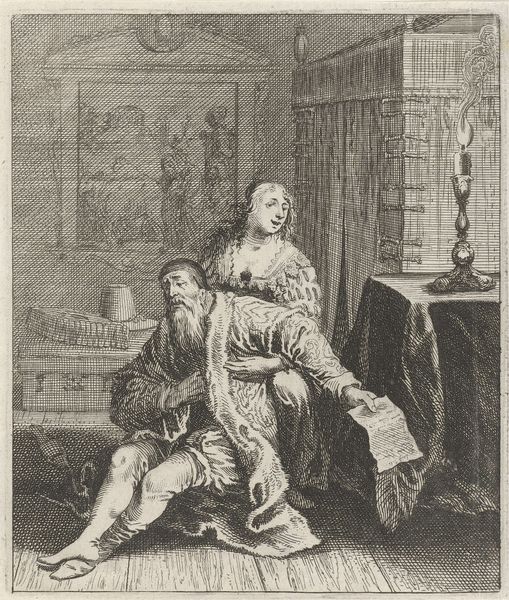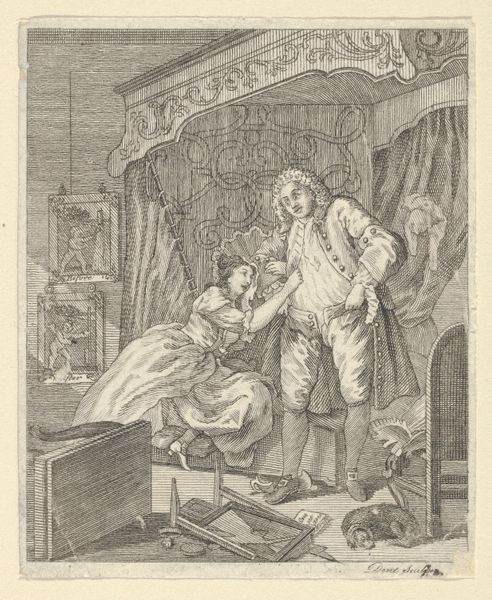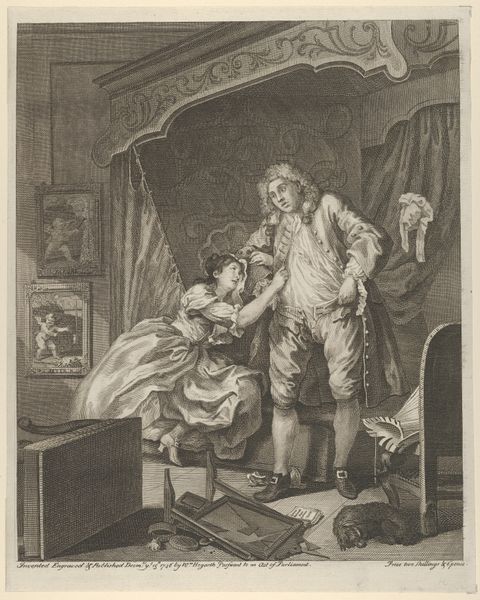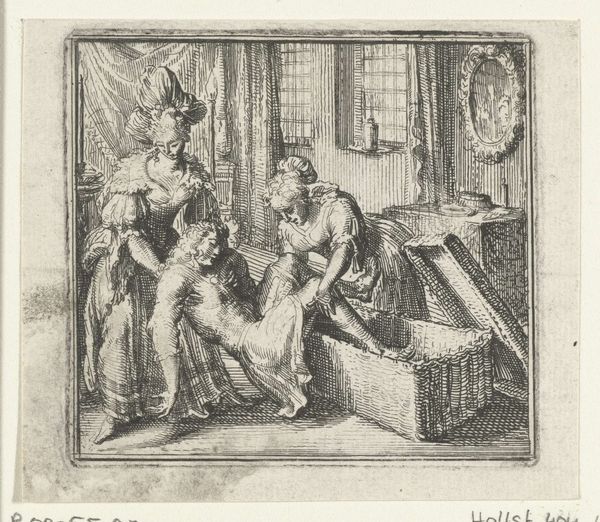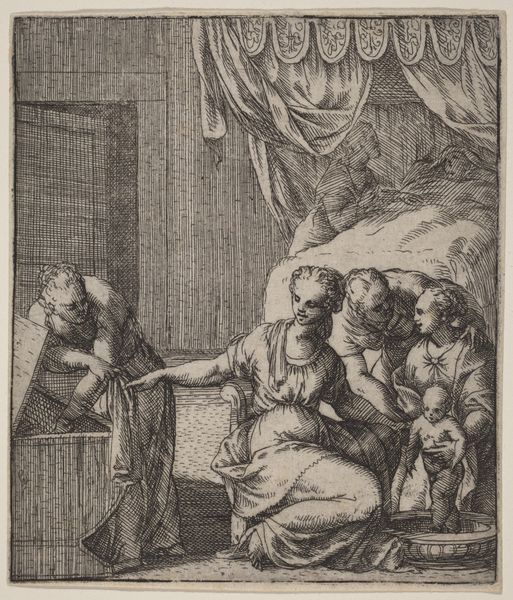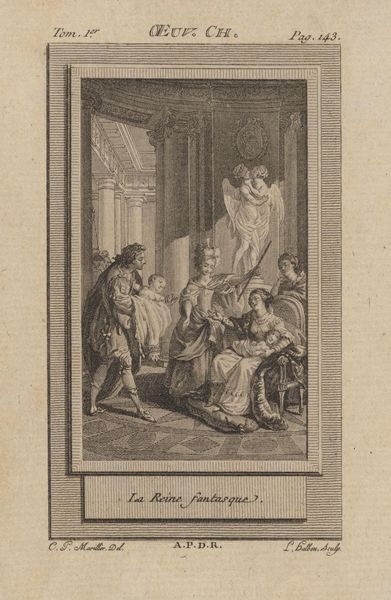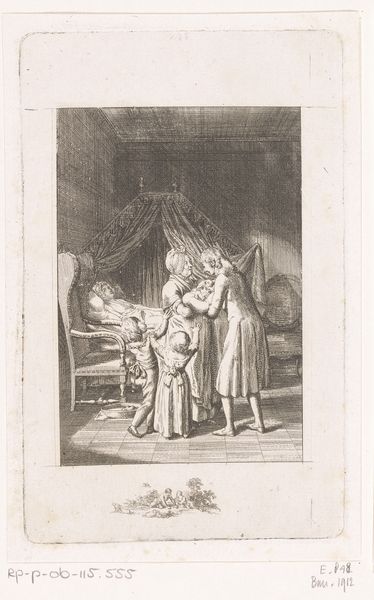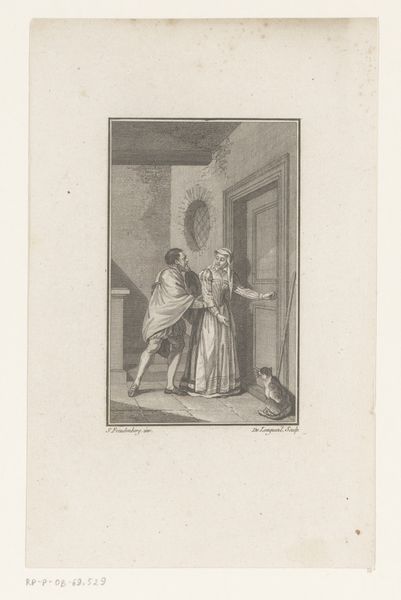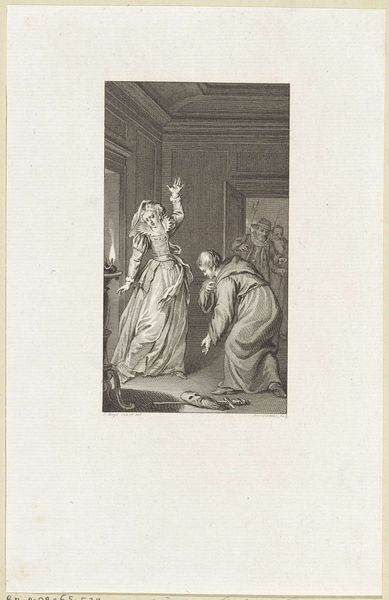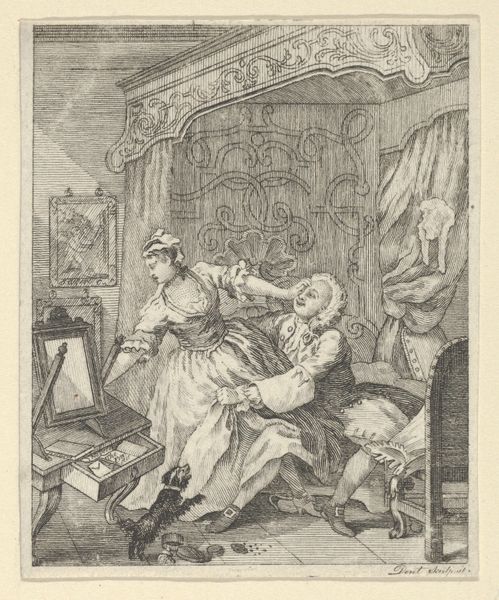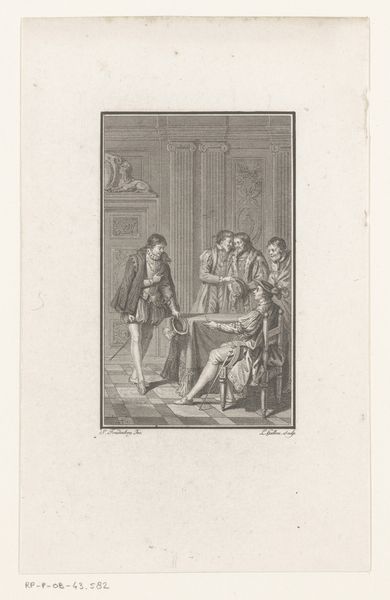
engraving
#
toned paper
#
baroque
#
mechanical pen drawing
#
pen sketch
#
sketch book
#
figuration
#
personal sketchbook
#
sketchwork
#
pen-ink sketch
#
sketchbook drawing
#
genre-painting
#
storyboard and sketchbook work
#
sketchbook art
#
engraving
#
erotic-art
Dimensions: height 176 mm, width 142 mm
Copyright: Rijks Museum: Open Domain
Editor: This is Willem Basse's "A Woman Seated on a Man’s Lap," an engraving from around 1634. I'm immediately struck by the intimacy of the scene, but also by the power dynamic on display. What’s your read on this, in terms of historical context? Curator: It's vital to dissect that so-called "intimacy" you’ve mentioned. Considering the period, how might this image function within the established patriarchal structures? Notice how the woman’s pose suggests vulnerability, almost collapse. Where is her agency here? Editor: I see what you mean. She does seem quite passive. Is this passivity reinforced by other visual cues in the room, like the painting above the figures? Curator: Precisely. Let’s analyze that painting, seemingly a mythological scene of lovers. Is this an idealized depiction, or a commentary on contemporary relationships and societal roles? And what about the sculpture on the right? Consider its gender and its role as a silent observer in the image. Is the viewer invited to participate in this act of observation? Editor: So, you're saying the image isn't simply about intimacy, but also reflects broader social anxieties around gender and power. The male figure whispers, perhaps suggesting secrets or even coercion. Curator: Exactly. It pushes us to consider this encounter through a critical lens, acknowledging the unspoken narratives and potential power imbalances inherent within seemingly "charming" genre scenes. Remember, images rarely offer neutral perspectives; they actively participate in shaping our understanding of social and political realities. How does examining details like the woman’s posture and the man’s gaze shift your perspective now? Editor: It really challenges my initial impression. I see it more as a commentary on the woman's restricted role in society, not just a simple scene of affection. I learned that looking deeper into gendered social relations within the scene, through a historical lens, has unlocked an array of complexities in Basse's work. Curator: It’s essential to move beyond surface-level appreciation. Only then we can truly unpack the complexities and potential biases embedded within artworks and the eras that shaped them.
Comments
rijksmuseum about 2 years ago
⋮
Basse certainly knew Rembrandt in 1634, when they made a book together. This print suggests that he saw him at work that year on his similarly dressed full-length wedding portraits of Marten and Oopjen. That Basse gave the man Rembrandt’s moustache and the woman the eyebrows of Saskia implies an ‘inside joke’ between artists, perhaps celebrating Rembrandt’s marriage to Saskia the same year.
Join the conversation
Join millions of artists and users on Artera today and experience the ultimate creative platform.

